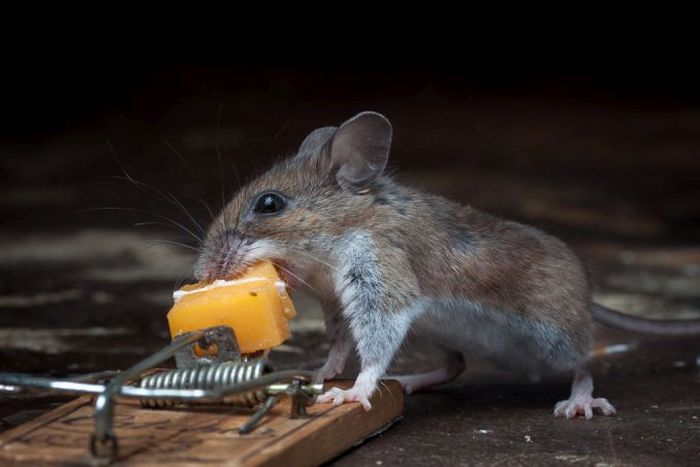|
|
Mouse Against A Mousetrap
|
It is a simple device with a heavily spring-loaded bar and a trip to release it. Cheese may be placed on the trip as bait, but other food such as oats, chocolate, bread, meat, butter and peanut butter are commonly used. The spring-loaded bar swings down rapidly and with great force when anything, usually a mouse, touches the trip. The design is such that the mouse's neck or spinal cord will be broken, or its ribs or skull crushed, by the force of the bar. The trap can be held over a bin and the dead mouse released into it by pulling the bar. Rats are much larger than mice; a much larger version of the same type of trap is used to kill them. Some spring mousetraps have a plastic extended trip. The larger trip has two advantages over the smaller traditional type: increased leverage, which requires less force from the rodent to trip it; and the larger surface area of the trip increases the probability that even the most cunning of rodents will set off the trap. The exact latching mechanism holding the trip varies a lot and some need to be set right at the edge in order to be sensitive enough to catch cautious mice.
In 1899, John Mast of Lititz, Pennsylvania, filed a U.S. patent for a modification of Hooker's design that can be "readily set or adjusted with absolute safety to the person attending thereto, avoiding the liability of having his fingers caught or injured by the striker when it is prematurely or accidentally freed or released." He obtained the patent at 17 November 1903. After William Hooker had sold his interest in the Animal Trap Company of Abingdon, Illinois, and founded the new Abingdon Trap Company in 1899, the Animal Trap Company moved to Lititz, Pennsylvania, and fused with the J.M. Mast Manufacturing Company in 1905. The new and bigger company in Lititz, however, retained the name Animal Trap Company. Compounding these different but related patents and companies may have contributed to the widespread mis-attribution of priority to Mast rather than Hooker.
• Electric mousetraps
This more recent type of mousetrap delivers a lethal dose of electricity when the rodent completes the circuit by contacting two electrodes located either at the entrance or between the entrance and the bait. The electrodes are housed in an insulated or plastic box to prevent accidental injury to humans and pets. They can be designed for single-catch domestic use or large multiple-catch commercial use. See U.S. Patent 4,250,655 and U.S. Patent 4,780,985
|
|









